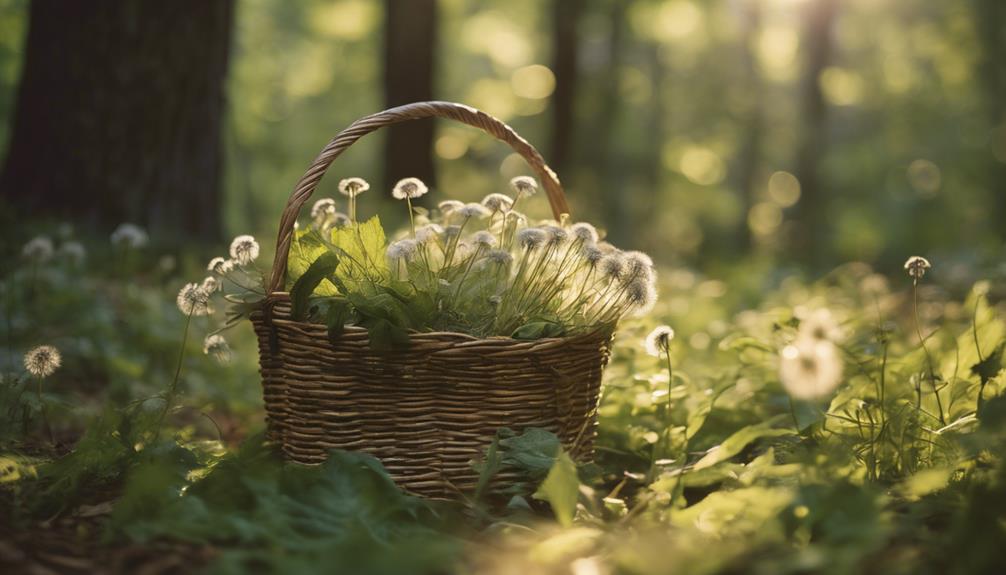To identify trees for foraging, focus on bark, buds, and twigs. Check the bark’s texture, color, and patterns—smooth for birch or thin and papery for paper birch, rugged for oak. Observe buds’ shape, size, and arrangement—rounded and clustered for maples or long and pointed for pines. Examine twigs’ color and scars to confirm species. Mastering these features helps you find edible plants and bird habitats; explore further to sharpen your skills.
Key Takeaways
- Examine bark texture, color, and pattern (smooth, ridged, peeling) to distinguish tree species in winter or leafless periods.
- Observe bud shape, size, color, and arrangement to identify trees early in the season when leaves are absent.
- Analyze twig features such as color, texture, and leaf scar pattern for accurate species identification.
- Use bark, buds, and twigs collectively to locate food sources, nests, and foraging spots for birds and wildlife.
- Recognize subtle differences in these features to improve foraging success and ecosystem understanding.

For foragers, knowing how to identify different trees is vital for finding edible and useful resources in the wild. When you’re out in nature, observing the bark, buds, and twigs can reveal a lot about a tree’s identity. These features are indispensable for tree identification techniques, especially when other leaves or fruits aren’t visible. If you’re interested in bird foraging, understanding tree species becomes even more important, because many birds rely on specific trees for shelter, nesting, and food. Recognizing these trees helps you locate safe foraging spots and understand the broader ecosystem around you.
Start with the bark. It’s often the most visible and distinctive feature of a tree, especially in winter when leaves are absent. Some trees have smooth, thin bark, like beech or birch, which can be easily distinguished by touch and appearance. Others, like oaks and pines, have thick, rugged, or deeply ridged bark that feels coarse under your fingertips. The color variations—gray, brown, reddish, or even white—are clues that can help differentiate species. For example, the papery, peeling bark of a paper birch is quite different from the deeply furrowed, dark bark of an oak. When you’re bird foraging, knowing which trees support specific bird species can guide you to the right areas. Many songbirds prefer certain trees for foraging or nesting, so recognizing these trees by their bark can help you find the birds and their food sources.
Next, examine the buds. They’re often overlooked but are key identifiers, especially during early spring. Bud shape, size, and arrangement vary widely among trees. Some buds are rounded and clustered, like those on maples, while others are long and pointed, like pine or spruce. The color of the buds can also be distinctive—red, green, or brown—and can tell you about the species. When you’re bird foraging, many birds feed on the insects that gather around specific trees during spring. Recognizing the buds helps you anticipate where insects might be, and in turn, where birds are likely to be foraging.
Finally, look at the twigs. They can reveal a lot through their color, texture, and leaf scars. Twigs with smooth, reddish bark might belong to a cherry, whereas rough, grayish twigs could indicate an ash. The arrangement of leaf scars around the twig helps confirm species identification. If you’re tracking bird activity, paying attention to twigs can also indicate the presence of nests or roosts. Spotting fresh, broken twigs might hint at recent bird activity or foraging, giving you clues about where to look for edible plants or bird food sources. Additionally, understanding the tree identification process often involves noting these subtle features, which are essential for accurate recognition in diverse environments.
Frequently Asked Questions
How Do Seasonal Changes Affect Bark and Twig Identification?
Seasonal variation markedly impacts bark and twig identification, making it essential to observe changes throughout the year. During winter, bark texture becomes more prominent as leaves fall, revealing patterns and ridges. In spring and summer, new buds and tender twigs emerge, offering clues through color and shape. By noting these seasonal shifts, you can better identify trees, recognizing how bark texture and twig features evolve with the seasons.
Can Bark and Twigs Be Used to Identify Young Trees Accurately?
Yes, you can use bark texture and twig color to identify young trees accurately. Pay attention to the bark’s texture—smooth, rough, or flaky—and note the twig’s color, whether it’s reddish, brown, or gray. These characteristics are often distinctive even in young trees. By observing these features closely, you increase your chances of correctly identifying the species, making foraging safer and more precise.
Are There Any Safe Methods to Peel Bark for Closer Inspection?
Ever wondered how to safely peel bark for closer inspection? Yes, you can do it carefully by choosing a small, loose section and gently peeling it back without damaging the tree. Use a sharp, clean tool and avoid gouging or tearing the bark. This method allows for better twig inspection and bark study, helping you identify trees more accurately without harming them. Always peel gently and responsibly.
How Do Invasive Species Impact Native Tree Bark and Twig Features?
Invasive species can markedly impact native tree bark and twig features by causing bark disruption, which weakens the tree’s defenses and alters its appearance. You might notice changes like unusual bark textures, lesions, or abnormal growths. These disruptions can make trees more vulnerable to pests and diseases, ultimately affecting their health and identification. Staying alert to these signs helps you recognize invasive influences early and supports native tree conservation efforts.
What Tools Are Best for Collecting Bark and Twig Samples in the Field?
You should use sharp, sturdy field collection tools like a bark spud or a pruning knife for sampling bark and twigs. These tools allow precise, clean cuts essential for accurate identification. Employ sampling techniques such as gently peeling bark or snapping twigs to gather representative samples. Always carry a hand lens or magnifying glass to examine features on-site. Proper tools and techniques guarantee you collect high-quality samples for reliable tree identification.
Conclusion
Now that you’ve uncovered the secrets behind bark, buds, and twigs, you’re closer than ever to identifying trees in the wild. But remember, nature always holds surprises—each tree has its own story waiting to be discovered. Are you ready to trust your instincts and venture deeper into the forest’s mysteries? The next foraging adventure could change everything. Keep your senses sharp—the forest’s secrets are calling.









